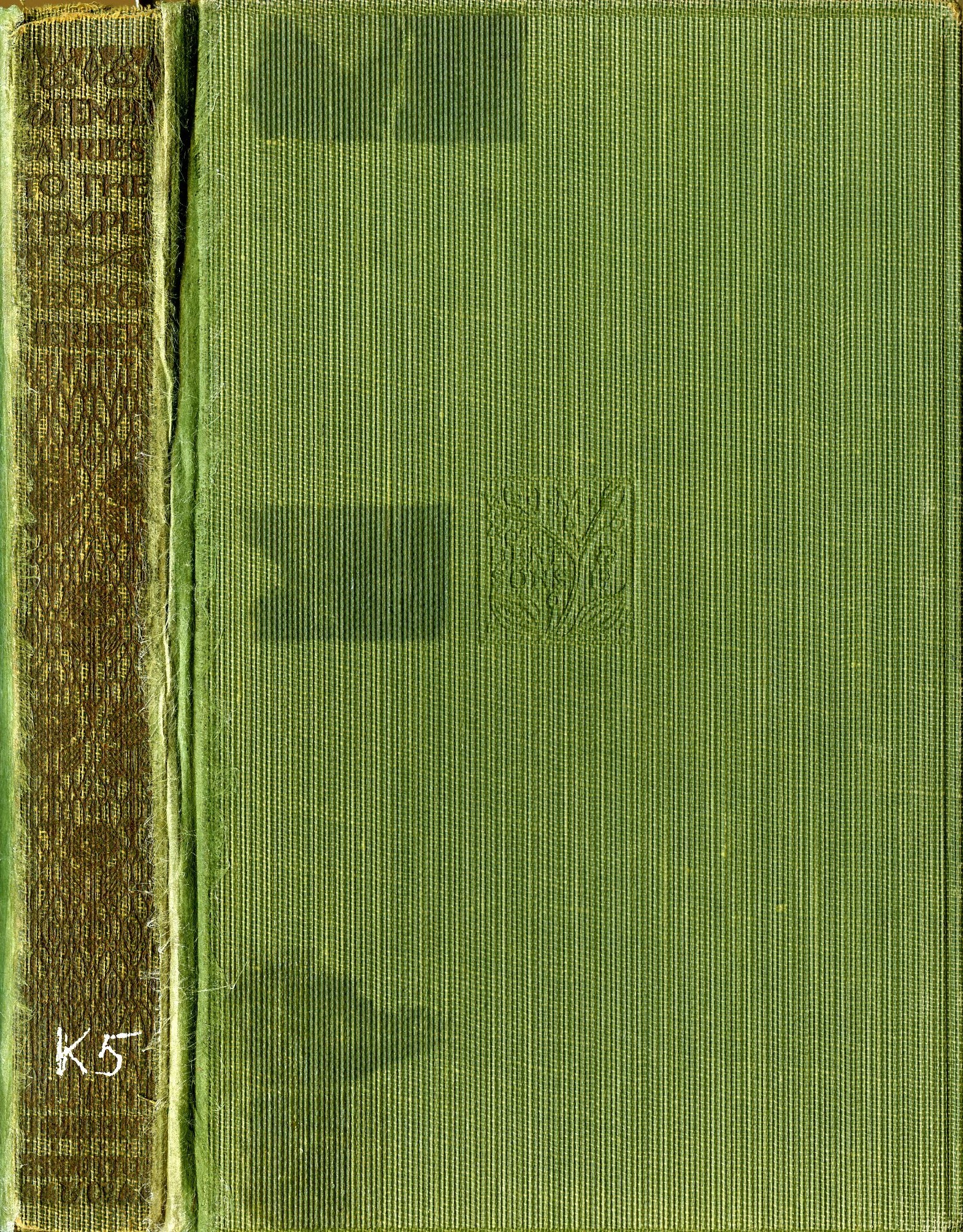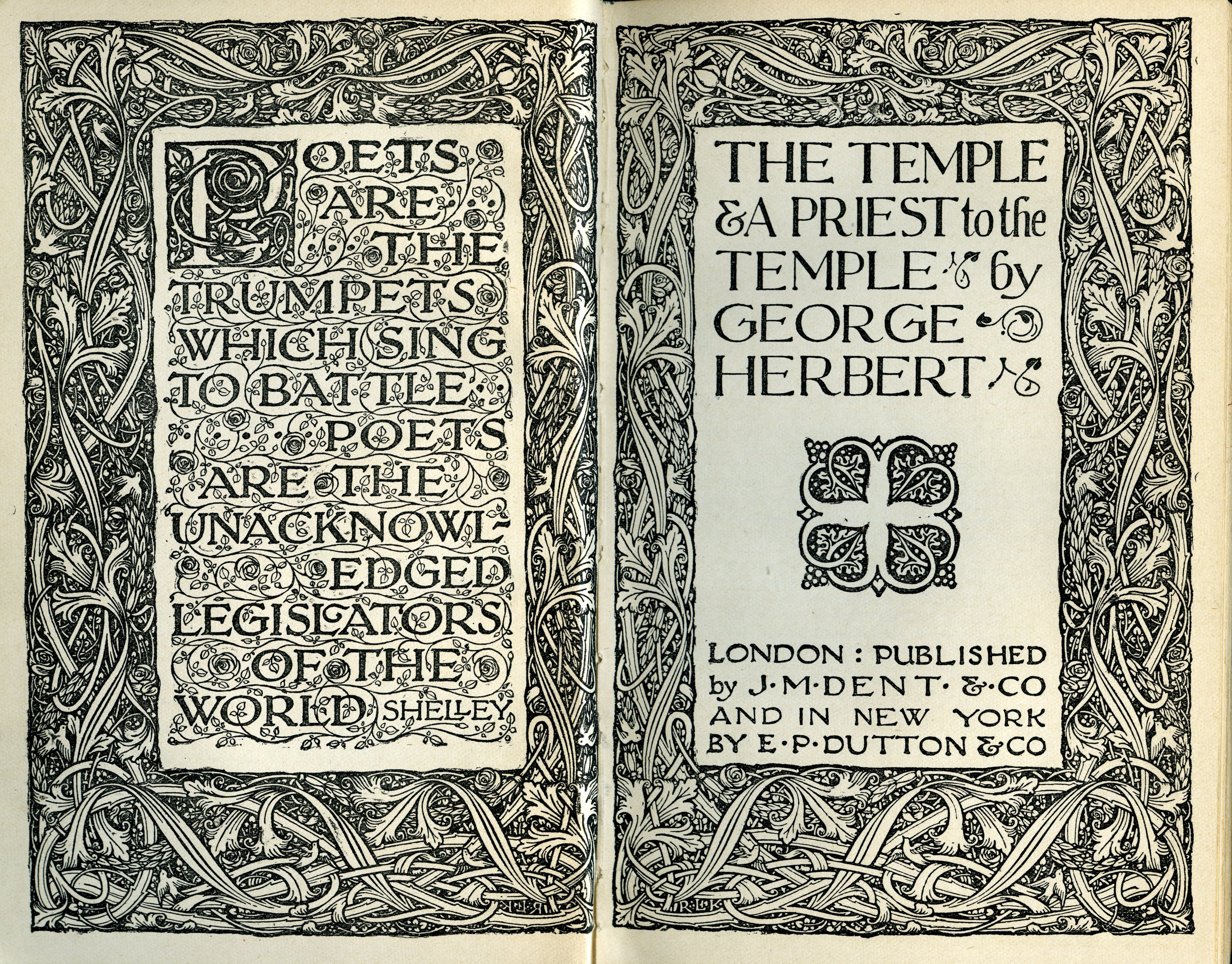
Each Easter season I return to a poem called “The Flower,” written by the Anglican priest George Herbert and published shortly after his death in a collection called The Temple. In both its growth and its withering, the flower of the poem represents the poet’s spiritual life, and the verses speak powerfully to the renewal that only God can bring. “The Flower” opens in joyful exclamation—
“How fresh, oh Lord, how sweet and clean
Are thy returns! even as the flowers in spring”
—but my favorite image appears at the start of the second stanza, where the poet marvels,
“Who would have thought my shriveled heart
Could have recovered greenness?”
C.S. Lewis took note of the second stanza as well. At the Marion E. Wade Center at Wheaton College, Illinois, where I work, we care for nearly 2,500 of the books that Lewis had in his personal library, many of which include his notes and underlinings. Lewis’s copy of The Temple is no exception. The back pages of the book contain a carefully constructed index in Lewis’s own hand, and one of the index entries points us back to the concluding words of the second stanza of “The Flower.” Turning to the poem, we find a hand-drawn line, very likely added by Lewis himself, running down the page alongside the stanza. I find that line to be heartening—a pointer, perhaps, to a shared interest. And though the connection between poem’s verses and the book’s appearance is purely coincidental, I appreciate the fact that Lewis’s copy of The Temple has a weathered green cover.
What I love about “The Flower,” and about Herbert’s poetry more generally, is that it helps us see the seen thing better, helps us pay attention to it, so that we may glimpse the unseen thing. By bringing the flower into clearer focus, Herbert helps strengthen the eyes of faith. Herbert does not present nature itself as divine—the flower is a metaphor, after all—but he does represent nature in ways that point to its beauty while testifying to who God is and who we are in relation to Him.
How during this Easter season might we recover greenness in Herbert’s sense? The poetry of The Temple is an excellent starting place. But if you are looking for another literary guide, I recommend turning (or returning) to another writer whose works we collect at the Wade Center—J.R.R. Tolkien. Should you visit the Wade to pore over the annotations in Lewis’s books, you’ll also have the chance to examine the small oak desk upon which Tolkien penned The Hobbit.
In a note to his American publisher in June of 1955, Tolkien wrote,
“I am (obviously) much in love with plants and above all trees, and have always been; and I find human maltreatment of them as hard to bear as some find ill-treatment of animals.”
The parenthetical “obviously” is significant. Though Tolkien didn’t view The Lord of the Rings as autobiographical, he was willing to admit that his love of plants and trees was on full display in his life and work.
Tolkien’s faith was on display in his writing as well, as Holly Ordway argues in her remarkable book Tolkien’s Faith: A Spiritual Biography. Ordway’s first chapter begins with Tolkien’s own words on the matter: “The Lord of the Rings is of course a fundamentally religious and Catholic work; unconsciously so at first, but consciously in the revision.” As with Tolkien’s “obviously” so too with his “of course.” After calling our attention to the latter, Ordway persuasively demonstrates the truth of Tolkien’s words, exploring in detail how his religious convictions and practices were indeed fundamental to him and his work. “The Lord of the Rings is not an allegory of the Gospels or a tale didactically expressing Christianity,” she writes. “Rather, the whole world of Middle-earth and everything in it is infused with, rooted in, its author’s Christian vision of reality.”
Ordway’s metaphor of rootedness is a fitting one, and—in our pursuit of Herbert’s greenness—it is worth exploring the entanglements between the obvious and fundamental aspects of Tolkien’s work: his love of “growing things” (to borrow a phrase from Treebeard) and his faith.
Consider a few of the trees that we find across Tolkien’s writings.
In his poem “Mythopoeia,” Tolkien responds to C.S. Lewis’s view (before Lewis converted back to Christianity) that myths are beautiful yet untrue. Tolkien begins the poem among the trees, expressing Lewis’s views as follows:
“You look at trees and label them just so,
(for trees are ‘trees’, and growing is ‘to grow’).”
The problem with viewing nature in such purely naturalistic terms, Tolkien goes on to suggest, is that it ignores the origins of terms like “tree.” It leaves out the humans who name the things of the world and develop myths about them and, more importantly, it leaves out the Source of such creativity. For Tolkien, human creativity finds its beginnings in God, and we reflect Him through acts of sub-creation. Thus he writes,
“The heart of man is not compound of lies,
but draws some wisdom from the only Wise,
and still recalls him.”
Whether it is the simple act of identifying a tree by name or the complex development of stories across time and place—what Tolkien describes elsewhere as “the intricately knotted and ramified history of the branches on the Tree of Tales”—our creativity flows from, and is a form of reverence for, the One who created all things.
In The Lord of the Rings, we encounter not just trees but also the tree-like Ents. Referring to himself and the other Ents as “tree-herds,” Treebeard explains to Merry and Pippin that the Ents help the trees grow and develop:
“We keep off strangers and the foolhardy; and we train and we teach, we walk and we weed.”
In line with Ordway’s quotation above, Tolkien’s Ents are not meant to be read allegorically; however, the tree-herding activity of the Ents reinforces the theme of stewardship in The Lord of the Rings—a theme that echoes Scripture’s call to humans to care for creation and, just maybe, encourages us to take up similar work in our own places. (For further encouragement along these lines, check out Kristen Page’s book The Wonders of Creation: Learning Stewardship from Narnia and Middle-Earth, which grew out of Page’s lectures for our annual Ken and Jean Hansen Lectureship at the Wade Center.)
And in Tolkien’s short story Leaf by Niggle, we encounter an artist desperately trying to work on his painting of, yes, a tree. This tree stands for our efforts to create art, which, though frequently frustrated and often motivated by self-interest in this life, may be purified and brought to fruition in the age to come.
Tolkien’s trees testify to the beginning, middle, and end of Christian story. Among their roots and trunks and branches, we encounter illustrations of his views about creation, the proper ways to care for it, and its culmination.
In a 1945 letter, Tolkien told his son Christopher about an essay by Lewis on the truth and beauty that we find in the story of Scripture. In the essay, which Ordway observes is likely his piece “Myth Became Fact,” Lewis argued that people of faith are, in the words of Tolkien’s letter, “meant to draw nourishment from the beauty as well as the truth” of the story. But what of the person without faith who “clings” only to its beauty? According to Tolkien, Lewis maintained that such readers “still in that way get some nourishment and are not cut off wholly from the sap of life.”
Greenness for Herbert is ultimately the Lord’s doing. We should seek, therefore, to find nourishment in the truth and the beauty of Scripture, the source of the sap of life. Growing things spring up from these pages as well: fruit trees and fig trees and oak trees and olive trees; vines and branches; a new shoot springing forth from a stump, a crown of thorns, the wood of the cross. And as the Psalmist reminds us, the one who “meditates day and night” on the law shall be “like a tree.” When we read and digest the Word of life, we grow greener.
C.S. Lewis's copy of The Temple
Herbert, George. The Temple & A Priest to the Temple. J.M. Dent, 1908. C.S. Lewis Library. Marion E. Wade Center. Wheaton College, Wheaton, IL.


Celebrate our 2nd birthday!
Since Spring 2023, our readers have enjoyed over 1,000 articles. All for free.
This is made possible through the generosity of our amazing community of supporters.
If you enjoy Seen & Unseen, would you consider making a gift towards our work?
Do so by joining Behind The Seen. Alongside other benefits, you’ll receive an extra fortnightly email from me sharing my reading and reflections on the ideas that are shaping our times.
Graham Tomlin
Editor-in-Chief





